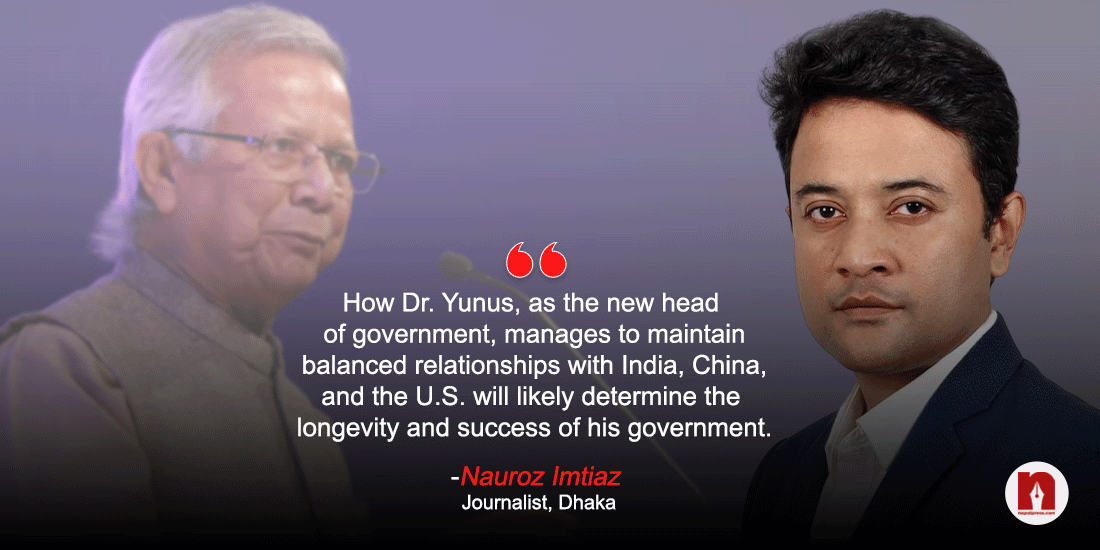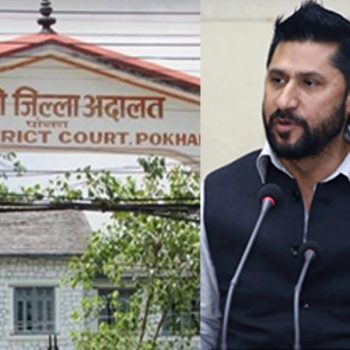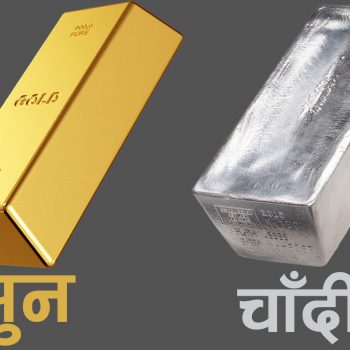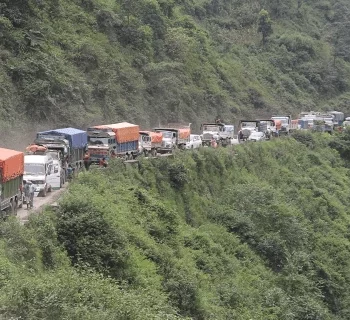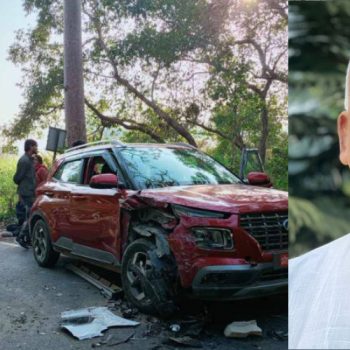SINO-INDIAN RIVALRY HAS AN OPPORTUNITY TO RETHINK
THROUGH THE WIDER PRISM OF COLLABORATIVE LEADERSHIP USING COVID AS AN OPPORTUNITY
 NepalPress
NepalPress

With the unleashing of mass vaccination campaigns against Covid worldwide, the hiatus between nations as vaccine-haves and vaccine-have-nots has become starkly visible. Even developed countries can be seen squabbling among themselves as WHO has failed to execute a functional platform where powerful nations spare a thought and act in the interest of the poorer ones. And that is purely a consequence of this pandemic’s immense economic fallout, that refuses to be remedied, due to successive Corona waves.
THE VACCINE MEGA-FACTORIES OF THE WORLD
While rich nations are hoarding mRNA vaccines, mostly from Pfizer-BioNTech and Moderna; That has created an opportunity for India, China, and Russia to flex their muscles. These three are largely competing to supply their own vaccines to the largest mass of humanity that falls entirely outside the ambit of the manufacturers above. This development has deep-seated geopolitical consequences. At this time, it probably makes no sense for the two sides, India and China, to be locked in a combative posture in an expensive exercise over a vast expanse of high-altitude desert.
POSSIBLE CONFLICT AND COVID
The most problematic aspect is that while the armies of China and India are locked in an eyeball-to-eyeball confrontation along their shared border, any escalation of conflict can affect the Covid vaccination effort. It takes no deep deductive abilities to foresee this.
Secondly, China has earned its preeminence as a factory of the whole World and losing another one of its key customers, right in the neighbourhood does not look well-advised. Especially against the backdrop of an ongoing trade war with the US, their sabre-rattling is simply unnecessary. I am sure that there is some Ancient Chinese proverb attesting to the age-old wisdom that no customer likes to do business with a dominating shopkeeper. The dependence that China has created so painstakingly over several decades for the whole World must not be frittered away for imagined gains.
Their armies are made of human beings who are proven to be vulnerable, now congregating in the harshest of climates on the Sino-Indian border – offering the virus another opportunity to spread its wings during such heavy deployment. I am sure that the two sides would have vaccinated their troops on priority, but this is not exactly the best time for hawkish posturing.
VACCINE AS SOFT POWER
“While it serves their foreign policy objectives, it serves their … commercial interest to expand the market share of their vaccine products,” Yanzhong Huang, a senior fellow for global health at the Council on Foreign Relations, reportedly said to CNBC. Adding, “In the meantime, it also helps mitigate the vast disparities in terms of the vaccine access between the wealthy nations and the poor nations.”
Meanwhile, a terse warning came from the WHO.
The World is on the brink of a catastrophic moral failure – and the price of this failure will be paid with lives and livelihoods in the World’s poorest countries.
Tedros Adhanom Ghebreyesus
WORLD HEALTH ORGANIZATION DIRECTOR-GENERAL
World Health Organization Director-General pointed out last week that drugmakers prioritized regulatory approval in rich countries with an eye on high margins, rather than share clinical trial details to expedite a global vaccine distribution initiative supported by the WHO. So, the WHO has been sidelined in its ability to play the role of a useful intermediary and balancer.
NURTURING Constituencies of Political Goodwill, Influence and Future Business
India has already sent 1 million Covid-19 vaccine doses to Nepal, 2 million to Bangladesh, 150,000 to Bhutan, 100,000 to Maldives and 1.5 million to Myanmar, per media reports. It has also sent 2 million doses to Brazil.
India approved two vaccines for emergency use – one developed by AstraZeneca and Oxford University, produced locally by the Serum Institute of India. The other, named Covaxin, was developed domestically. Newer vaccines, both imported and domestic, are also at various stages of Clinical trials. Work is also progressing on a nasal spray based vaccine.
Undoubtedly, Vaccine diplomacy is an effective use of soft power to help India, China and Russia grow their stature at this juncture.
India wants to burnish its credentials as a responsible global stakeholder while China would like to improve its reputation which got tarnished in the early stages of the Covid-19 pandemic.
Harsh Pant
OBSERVER RESEARCH FOUNDATION
“India’s generosity with its neighbours can help to mend ties, whether it be with Bangladesh (which was strained due to the Citizenship Amendment Act), or with Sri Lanka, where the Rajapaksas are known to have a pro-China tilt,” an expert responded to CNBC by email. The Rajapaksas are a prominent political family in Sri Lanka – both the country’s president and prime minister are part of the family.
“Even if the doses aren’t that many, it’s still significant enough to alleviate pressure on healthcare systems, allowing for resources to be allocated elsewhere,” Bery added.
This has allowed India to embellish its status as the World’s largest vaccine manufacturer, despite some initial hiccups.
CHINA EMERGES TALL
With the virus mostly under control domestically, China’s strategy includes striking deals with emerging economies to conduct clinical trials of Chinese firm Sinovac. It is also involved in scaling up vaccine production facilities in some countries.
This move is a part of a carefully crafted strategy to counter the criticism that the Chinese have faced for hoarding all manufacturing in their own country. To the discerning observer, it is clear that the seed material for these facilities also comes from China further improving its long-term business.
Beijing is also giving priority access to its vaccines in places like Southeast Asia, which is of strategic importance to China. In other sites, the country is offering loans to fund vaccine procurement.
WHERE HAS CHINA AND THE INDIAN SUBCONTINENT SUCCEEDED WHERE OTHERS HAVE FAILED?
PHYTOMEDICINE IS THE MISSED OPPORTUNITY FOR THE REST OF THE WORLD.
The World has glossed over the massive use of scientifically proven TCM decoctions by China and Ayurvedic decoctions called Kadhas in India and its neighbours, to help them counter Covid on a better footing than the Western World. Considering how the Big Pharma is poised at this juncture, it appears that this remarkable contribution of ancient phytomedicine is deliberately overlooked. Otherwise, there is no rational explanation for the 10-30 fold differences in mortality reduction seen in South Asia compared to the developed World. This is likely to play a vital role with the emergence of more noxious Covid strains that are adding to the vaccine rigmarole. It is about time that somebody busted the myth of the eternal supremacy of the allopathic system, scientifically. Unfortunately, both research and publishing are tightly controlled by Big Pharma worldwide.
This is another big opportunity for phytomedicine’s scientific emergence globally, but the potential is not fully exploited by both India and China. Another potent example of the current shallow adversarial geopolitics overshadowing the need for solving the biggest ongoing global problem is clearly visible. How opportunities are being frittered away due to narrowing prisms, is a significant cause for concern.
OFFSETTING THE IMAGE OF HEGEMONY AND CONFLICT WITH VACCINE SUPPLY
Eurasia Group’s China researcher, Allison Sherlock, informed CNBC that the benefits for China are limited to reinforcing economic and political ties in its existing sphere of influence. There, Beijing “is especially hoping that the vaccine will help repair relationships strained by tensions over the South China Sea, including with Indonesia, the Philippines, and Vietnam.”
India has similarly burnt its fingers on various issues with its smaller neighbours, the damage that it seeks to repair with vaccine grants.
“India wants to burnish its credentials as a responsible global stakeholder while China would like to improve its reputation which got tarnished in the early stages of the Covid-19 pandemic,” said Harsh Pant, head of the strategic studies program at the Observer Research Foundation in New Delhi.
“Both would be hoping that their outreach would give them some political goodwill and influence as well,” he added.
The coronavirus was first reported in the Chinese city of Wuhan in 2019 and Beijing has faced criticism over its early handling of the pandemic.
Domestic considerations and ‘Rivalry’
Given the nature of Sino-Indian ties, experts said it was inevitable that New Delhi and Beijing’s efforts in providing vaccines to other countries would be viewed through a competitive lens. Both India and China have downplayed the notion of vaccine diplomacy, describing the jabs as a necessary public good to tackle the global pandemic.
India, which kicked off its domestic immunization campaign this month, is not producing or using Covid vaccines as a kind of diplomacy, former Indian ambassador Rajiv Bhatia told CNBC. “It is very much first a national effort,” he said.
“Vaccines are primarily to help the country’s people but India has not forgotten its global responsibility,” Bhatia said. He explained that India’s efforts would help enhance the international prestige of the country’s scientists and products. The shots “will have positive impact beyond insulating people from this disease. It will add to the national pride and confidence.”
A VERY SAGE RESPONSE BY CHINA
Chinese foreign ministry spokesperson Zhao Lijian on Monday responded to questions about India’s plans to send vaccines to its neighbors and said, “This issue can afford no place for malign competition, let alone the so-called ‘rivalry’. We hope and welcome that more doses of safe and effective vaccines will be manufactured at a faster pace by more countries.”
Beijing has stepped up domestic efforts to immunize key groups of people ahead of the Lunar New Year next month, when many are expected to travel around the country. Reuters reported that China approved three vaccines for emergency use but only one for the general public, while a fourth is being used by the military. Likewise, India has multiple vaccines in the pipeline including a nasal spray vaccine.
CFR’s Huang said he sensed a shift in China’s strategy in which Beijing is starting to prioritize domestic needs more, but is still following through on promises. He explained that China is likely to rely more on countries that have signed partnership agreements to produce its vaccines and use that to support other nations. China may also “provide financial assistance so that (other countries) can buy the vaccines from other sources,” Huang added.
Challenges
One of the challenges vaccines developed locally in India and China face is their effectiveness in combating the disease. The still bigger challenge is Western media’s ancient habit to lionize western products and bring down Asia. The slant has often been seen in their reporting when anything was happening in India or China. A case study is the 29 Pfizer vaccination-related deaths in Europe.
This is the first time an RNA vaccine has been launched on such scale. The virus is still mutating and scientists and regulators are still negotiating a sea-of-unknowns. Prior to this, there is not a single RNA virus vaccine that has was rolled out and used worldwide. Moderna, BionTech and Pfizer are NOT only costly but also logistical nightmares for the larger parts of the World.
Whether manufactured from adenovirus strains or Coronavirus, Killed virus vaccines are an important and proven strategy to answer the World’s problems. At the rate that the virus is mutating, vaccines may not even prove to be enough.
Time and again, western companies have obtained accelerated approvals for profitable ‘opportunities’ like Zika etc. So, it makes no sense to blindly criticise the differing efficacy data or fast-track approvals granted by China, India or Russia. By all accounts, the vaccines made by India, China or Russia have NOT been shown to have higher side effects on a mega scale.
That millions are being vaccinated with good protection needs to be appreciated, instead of clamouring for the results of a few thousand Phase-3 omissions here or there. These are desperate times, and there have been a few desperate measures. There have been errors, politics, etc but that is not something that is limited to Asia. Anyone can revisit the Chloroquine controversy in Covid and conclude that truth and unbiased information has been a casualty during this pandemic.
“That is going to further complicate issue in their efforts to play a leadership role by reducing the vaccine access gap,” CFR’s Huang said.
INDIA IS THE WORLD’S LARGEST VACCINE MANUFACTURER
Eurasia Group’s Bery said that one advantage India has is that the Serum Institute is one of the World’s largest vaccine manufacturers and that the country supplies more than 50% of the World’s vaccines.
“It will take time, but as we’ve seen from South Africa and Brazil, countries are lining up to gain access to vaccines manufactured in India,” he said.
Bery explained, however, China has its own distinct advantage – unlike its South Asian rival, it has brought the pandemic under control much quicker, thus the Chinese economy has recovered faster.
“This allowed it to increase international policy actions, while other countries, such as India, remained distracted by the pandemic,” Bery said.
WHAT NEXT?
How China, India and Russia seize the opportunity and make this initiative more impactful is in their hands. It is time to say no to petty rivalries and possibly join hands for the rise of Asia. It is high time to choose prudence over pride and wisdom over vanity.
That is exactly what the US and Europe have been doing for a long time. Can India and China look beyond the tips of their noses?
Authored by : KP Singh






